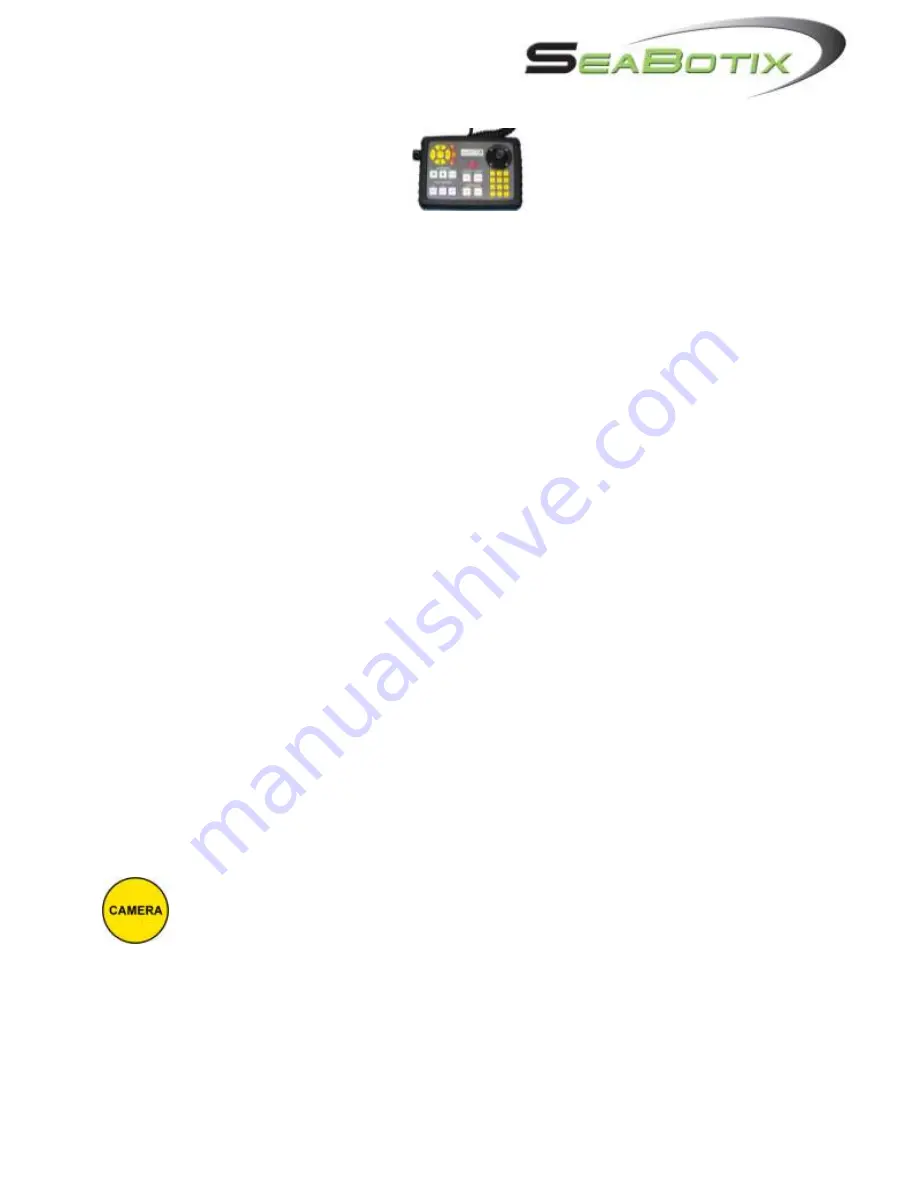
DOCS-010 Manual, SeaBotix Inc. Users, 200 Series – 18 Mar 09 - Rev B - Page 18 of 52
Holding the OCU correctly will help. The recommended method is to hold the OCU in both
hands with the left hand using all fingers to support the console and the thumb resting on
the vertical thruster knob. Place the right hand in such a way that the forefinger and thumb
hold the top of the joystick and the other three fingers support the console. Some may
prefer to place the console on a flat surface.
2.1.1
Joystick
The joystick is a proportional control, allowing the operator to operate the thrust as little or
as much as desired in any horizontal direction. Pushing the joystick forward moves the LBV
in the forward direction. Pulling the joystick backwards moves the LBV in the reverse
direction. Moving the joystick laterally moves the LBV in the respective direction laterally.
Rotating the upper portion of the joystick rotates the LBV clockwise or counter clockwise.
2.1.2
Proportional Vertical Thruster Control Knob
Located on the left side of the OCU is the vertical thruster control knob. Positioning your left
thumb on the top of the knob will allow you to easily rotate the knob. Rotating the knob
forward causes the LBV to surface and, conversely, rotating the knob backward causes the
LBV to dive. This function can be reversed in the Options menu on LBVs with flash memory
of ROV3.02 or higher.
The control knob is variable and has a center detent turning the vertical thruster off. Ensure
that the vertical thruster is off prior to removing the LBV from the water.
2.1.3
Camera Control
Note: Tilt, focus and internal light controls are not enabled when a rear facing camera is in
use on LBV
‟s so equipped.
2.1.3.1
Camera
The CAMERA button allows the user to select between two cameras if fitted to the
LBV. When the CAMERA button is pressed, the image on the monitor will switch
to the other camera and the camera chassis will rotate 90 degrees to provide the
same viewing angle if “camera rotate” is on (section 2.3.6.1). Also, switching
cameras switches the focus controls for the viewing camera. If a light accompanies the
optional second camera, the light controls will also switch.






























